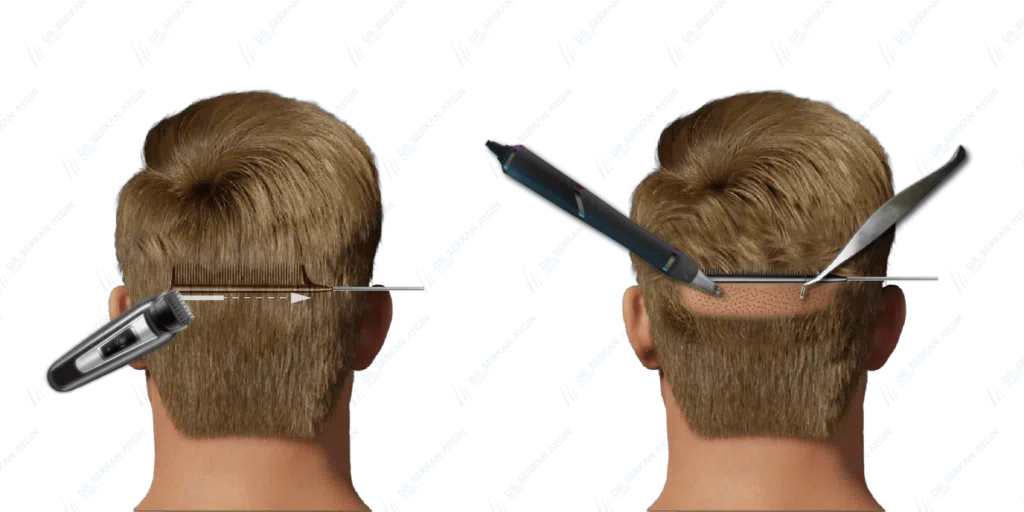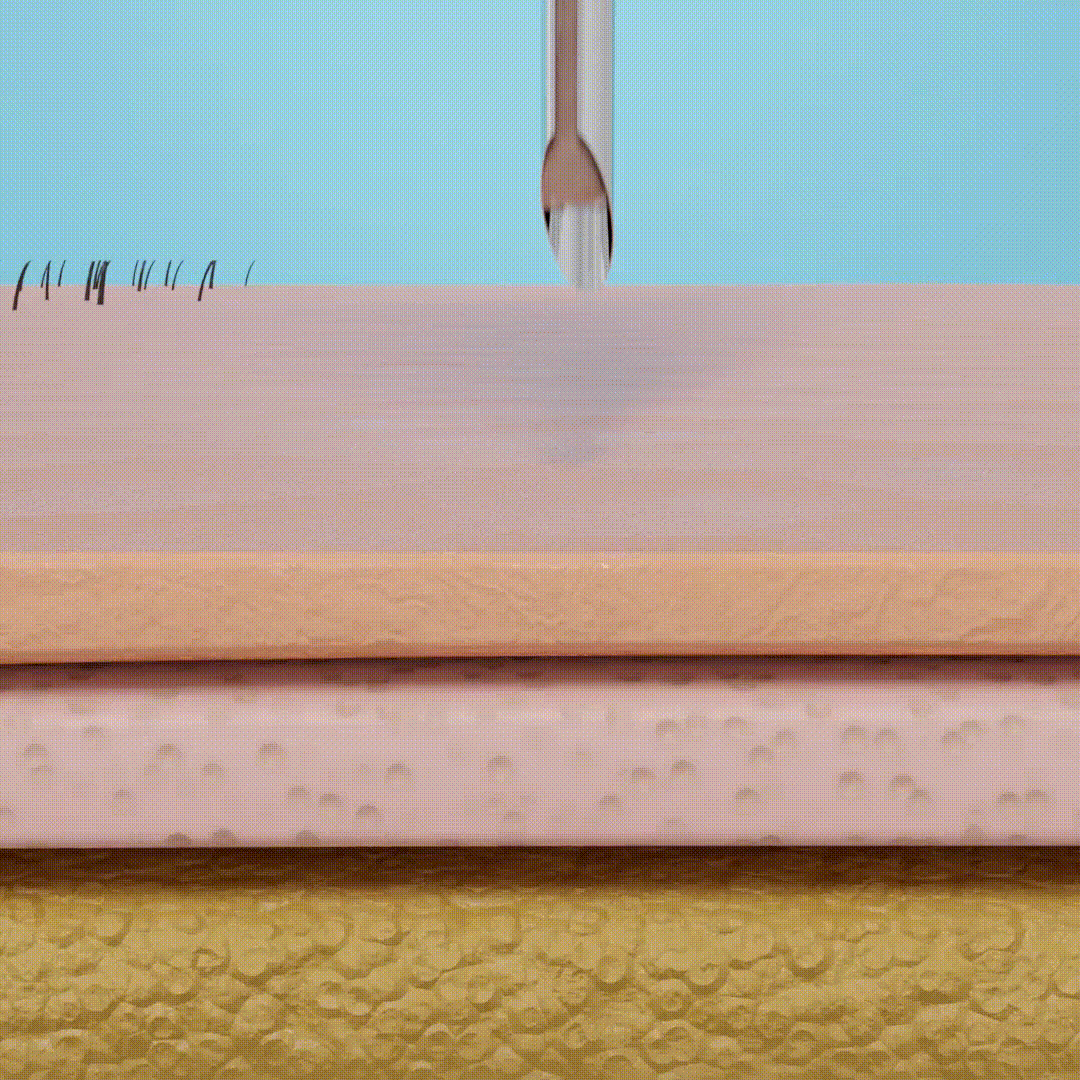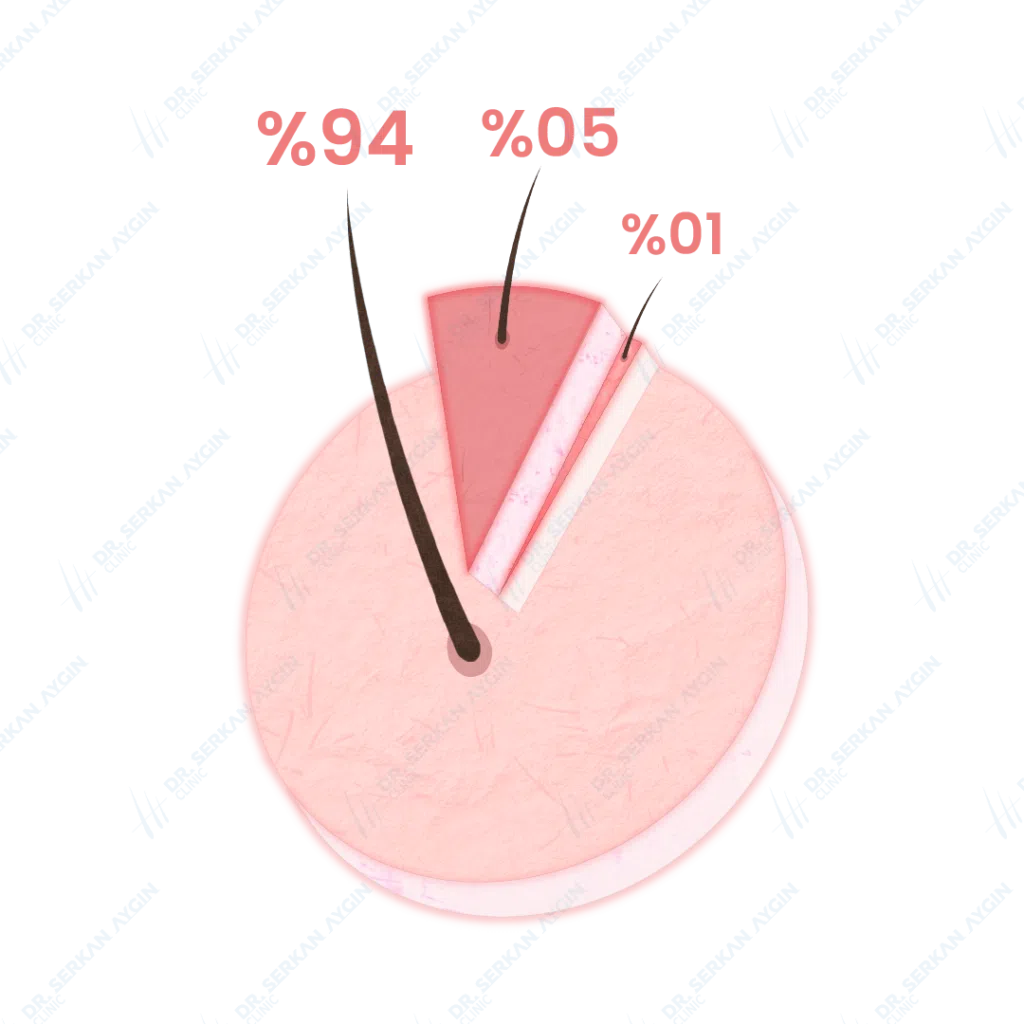What Is a “Hair Transplant Without Shaving”?

Different Types of No-Shave Hair Transplants
1. Completely Unshaven Hair Transplant
2. Partially Unshaved Hair Transplant
What Happens During Unshaven Hair Transplant Surgery?

If you ask for an unshaved DHI hair transplant, you will be required to partially shave the donor area but leave the recipient area intact. Then, Dr. Serkan Aygin’s team will carry out the procedure using a special medical device (the Choi pen) to harvest and implant healthy follicles.
You should know that this procedure requires a lot of precision and experience.
- First, local anesthesia is administered to the back of the head to numb any potential discomfort and pain.
- After dividing the donor area into very thin horizontal lines, the surgeon cuts and trims the existing hair in this area to make healthy grafts.
- Grafts are removed from the donor area and placed in a Petri dish.
- Then, using the Choi pen, the surgeon implants these grafts one by one into strategically placed, microscopic channels throughout the recipient area.
- After the surgery, the hair transplant team will instruct you on post-operative care and explain how to wash your hair.
Because you get to keep your hair long, you can return to your everyday life the next day. With unshaved hair transplants, the post-operative downtime is significantly shorter compared to traditional DHI, as there are no bandages, and you can hide any scars with the existing hair.
The “unshaved DHI hair transplant” is also called “long DHI hair transplant.” As with every other procedure, the long DHI hair transplantation at the Dr. Serkan Aygin Clinic is supervised by Dr. Serkan Aygin and other highly qualified doctors. They accompany the patient before the surgery and are available after the procedure.
What Are the Benefits of No-Shave Hair Transplants?
Some of the key benefits of getting a hair transplant without shaving include:
- Your hair stays long and styled as you like it;
- Grafts are undetectable under the long hair;
- Scars are minimal and require no bandages;
- The recovery is simpler and takes less time;
- You can return to your lifestyle the next day.
As you can see, unshaved hair transplants have many advantages that traditional techniques can’t offer. As such, they are ideal for patients with longer hair and people in public positions.
Are there any downsides to choosing a hair transplant that doesn’t require shaving your head? Unshaven hair transplant procedures may deliver unsatisfactory results when performed on unsuitable candidates. That’s because hair allows less precision and gets in the way of transplants.
Are You Suitable for an Unshaven Hair Transplant?
Should you undergo a hair transplant procedure without shaving your head first? That depends entirely on whether or not you are a suitable candidate for this type of procedure. The best way to determine this is to schedule a consultation with a surgeon at the Dr. Serkan Aygin clinic.
As a general guideline, you can consider yourself eligible for an unshaven hair transplant if your hair is long and you suffer from mild hair loss that can be corrected with fewer than 1,000 grafts. The thinner your hair, the better. Thin hair allows more precision and gives better results.
Partially shaved hair transplant procedures and long DHI hair transplants can be performed in cases where patients require more than 1,000 grafts. But even then, these procedures are unsuitable if you’re experiencing severe hair loss and you need more than 2,500 implants.
Conclusion

